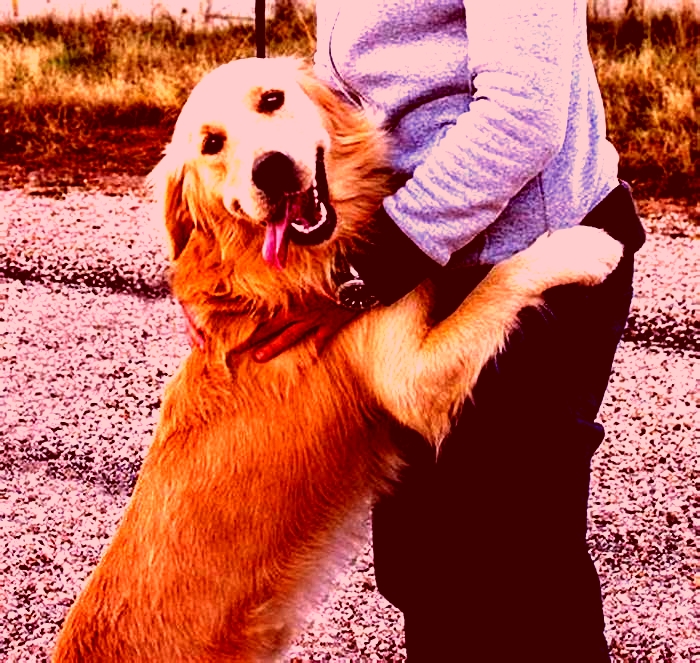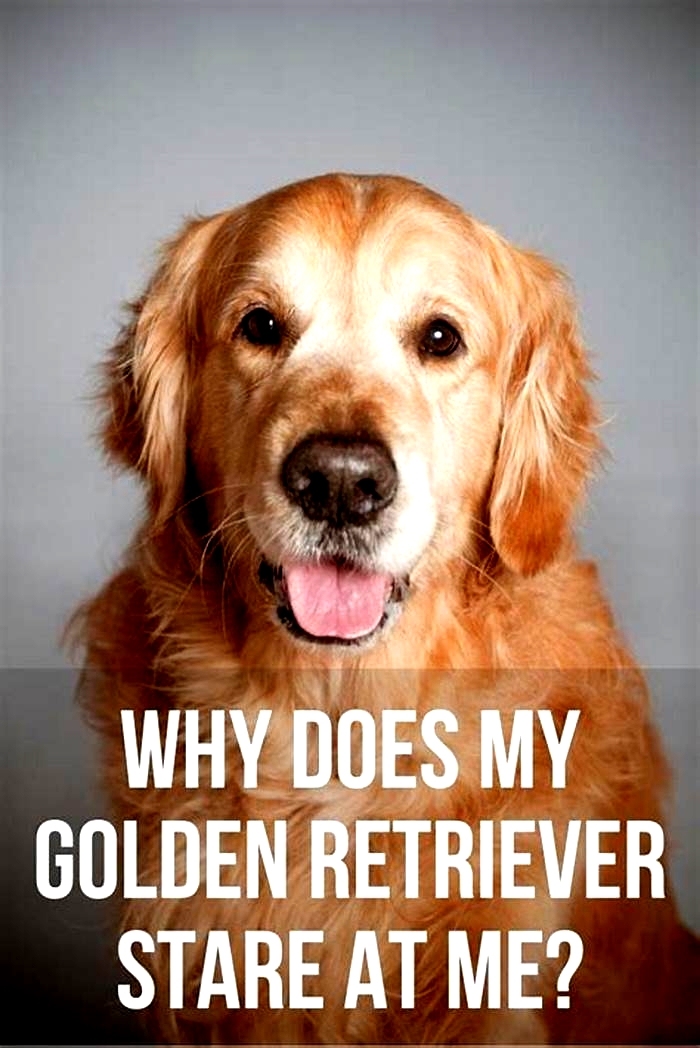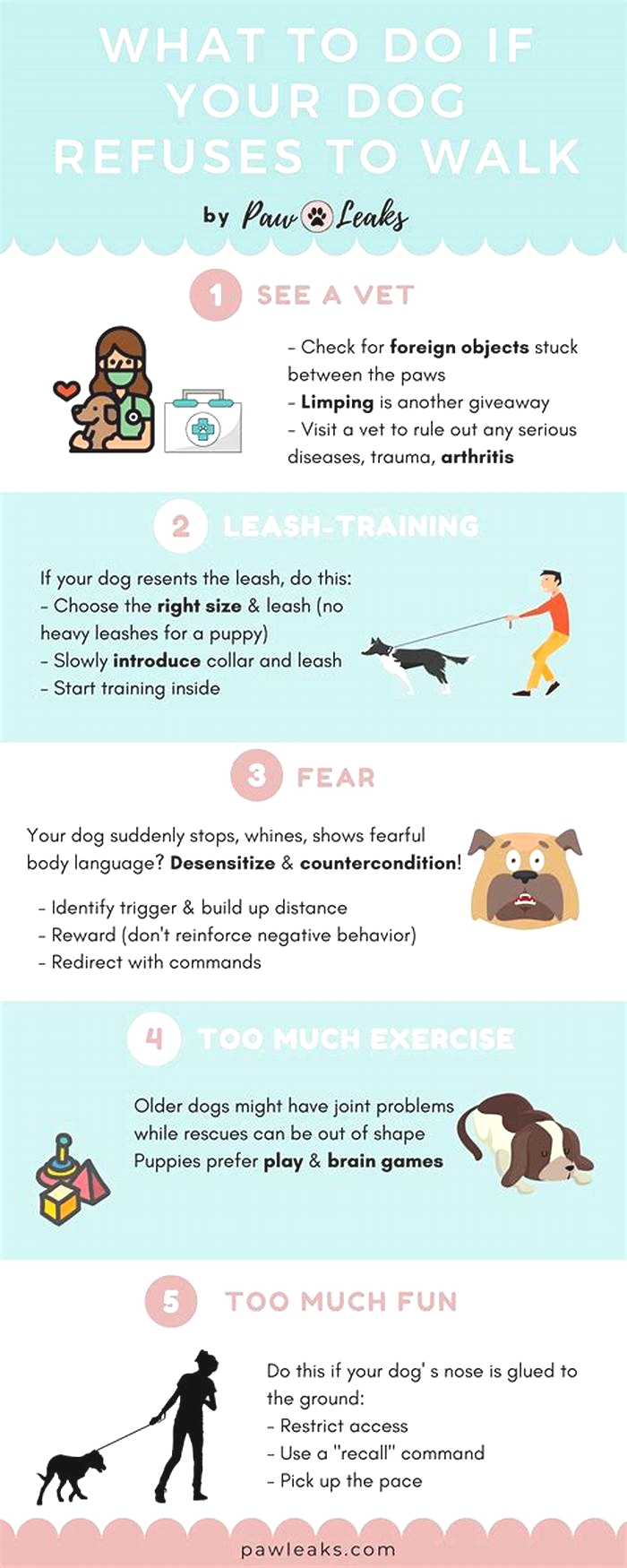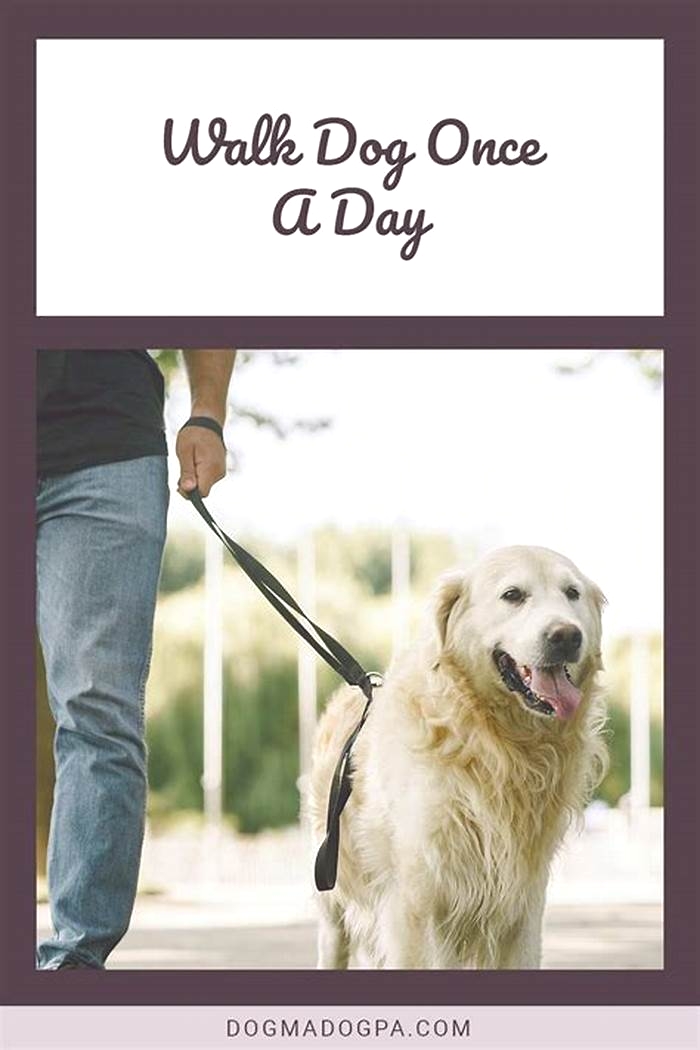Why do Goldens refuse to walk
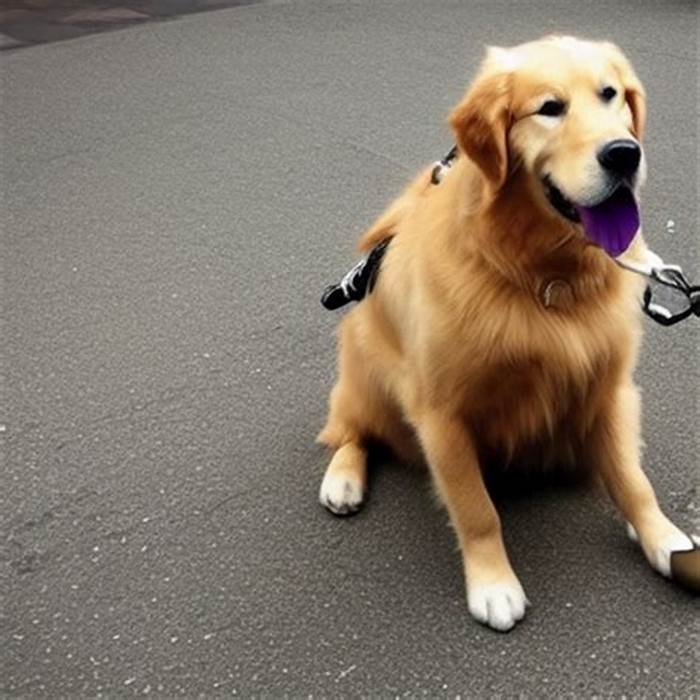
What to do when your dog refuses to walk
So, you're on a stroll and your dog refuses to walk. Stops dead in its tracks, plants all four paws, and leans back against your pulling. Obstinate, determined, stronger than ever in its stubbornness. What's going on? What do you do?
First, you'll want to make sure you have a high quality and comfortable dog harness or a strong dog leash to ensure your pooch doesn't slip out and run away. Second, you'll want to take a deep breath, as getting frustrated won't help the situation.
Your dog could be refusing to walk for a few reasons, and it's important that you get down to the bottom of it. Is it fear-based? Persistent stubbornness? Is their leash or harness uncomfortable?
We'll cover all the reasons why your dog refuses to walk below, along with some tips and tricks on how to combat puppy immobility. Walking is an important part of your dog's health regimen, so you'll want to get this sorted out ASAP. We're here to help.
Why your dog refuses to walk
There are a few reasons why your dog suddenly refuses to walk and it's not because they've suddenly forgotten how to. Figuring out why your dog refuses to walk is the first step to getting them moving again, so here are a few possible reasons why your pooch has suddenly frozen in place.
1. They are scared
Your dog could be frozen in place on the sidewalk or on the trails because they see or hear something that scares them. This could be a bike, a skateboard, a stroller, or other obstacles along the way maybe even another dog. They could even be scared of plastic bags or other things blowing about in the wind.
This is a common behavior in unsocialized puppies or in newly adopted rescue dogs who are unaccustomed to the sights and sounds outside of the shelter, though it may also happen if you've recently moved your dog to a new area.
2. They are uncomfortable
Ensuring that you have a harness or leash that fits your dog properly is of the utmost importance. If it's pinching under their legs or is too tight, this could severely limit their mobility or cause pain while on a walk neither of which you want for your pup.
If you've bought sweaters or other weather-related gear, make sure those fit as well. Your best bet is to let your dog get used to their harness, leash, or attire indoors, so you can see if there's anything bothering them and help them get comfortable with their new gear.
3. They are in pain
Your dog could be suffering from knee or hip pain, or could perhaps have stepped on something that injured its paw. Keep an eye out for signs of physical discomfort such as limping, favoring a specific foot, panting, or whining and make sure to take your dog to see a vet if you suspect something is up.
4. They stubbornly don't want to go
Maybe you're at the dog park or your dog hasn't been on a long walk in a while or maybe they know a bath is awaiting them at home. If your dog is refusing to walk and is otherwise happy and healthy, this may be a sign of a stubborn streak brewing. If that's the case, you may want to work on your dog's recall skills or keep some extra-delicious treats in your pocket.
Should I force my dog to walk if he doesn't want to?
Don't drag a dog that won't walk with you. This could be dangerous for them and, if they are already suffering from an injury, potentially injure them further.
If they aren't moving out of fear or stubbornness, dragging them along could cause an injury and will also cause them emotional distress. The only time you should drag or tug your dog is if it's in imminent danger, such as when it may get hit by a car or fall off a ledge.
Pause and take a moment to gather yourself. If you wait patiently and your dog eventually starts moving, reward them with a treat or a reassuring word. It may take longer to get home than you'd like, but you'll get there.
Worst case scenario: if your dog is small enough to be comfortably picked up and you're short on time, you can scoop them up and carry them home but you shouldn't rely on doing this.
If your dog is scared of something, dragging them past it won't help them get over it if you suspect they're scared of something they encounter on walks, talk to a behaviorist.
What to do when your dog refuses to walk
Don't worry, you can handle this. There are several things you can do to help make walking easier if your dog refuses to walk:
1. Make sure their leash or attire is comfortable
As mentioned above, make sure that your dog's leash or harness isn't pinching or limiting their movement in any way. Check out vet's guide on how to fit a dog harness for more information on this.
Make sure they are used to any new gear or attire before taking them out on a walk by letting them wear it throughout the house and throwing them the occasional treat for their troubles.
2. Bring high-value treats on every walk
Don't skimp on the good stuff when it comes to walking with your dog. Grab a handful of their favorite treats (check out our list of best dog treats for some ideas) and put them in your pocket for the walk. Reward good behavior with a treat, whether that's walking past a loud skateboard and remaining calm or consistently walking through a crowd.
3. Leave if something is really scaring your dog
Jessica Lempert, a certified professional dog trainer, suggests minimizing exposure to something that is causing your dog extreme fear.
"You should not force your dog to walk by things you know they hate," she says. In fact, turning around and walking the other way can keep the walk going without interruption while keeping your dog's anxiety levels down.
4. Check with your vet
If you suspect something is physically going on with your dog, make an appointment with your vet. They can check to see if your dog is having any knee or hip issues, or is dealing with any other ailments that may make walking less than fun for them.
If you live in a city, you may want to invest in doggy booties to ensure the pavement won't burn their feet or glass or salt won't injure their paw pads.
5. Consult a behaviorist
If your dog is displaying signs of severe anxiety or severe behavioral issues, reach out to a trainer or behaviorist don't try and diagnose what is going on yourself.
You'll want a trainer who uses positive reinforcement training techniques that can help you craft a specific plan for your pooch, so you'll be walking together without issue in no time!
Why Does My Puppy Refuse to Go on Walks?
Taking your puppy for regular walks is important forexerciseandsocialization. But puppies arent born knowing how to walk on leash. Although some will walk beside you and others will pull you along, there are some puppies that, as soon as you clip on the leash, refuse to budge. Whats up with these reluctant pups? Why does the leash act like a stop sign? The truth is many puppies are frightened, either of the collar and leash or of the great outdoors. Read on to learn more about why your puppy refuses to go on walks and how you can change their attitude.
Teach Your Puppy to Love the Leash
Simply clipping on a leash can be enough to shut some puppies down. Thats because a leash is a form of restraint. When your puppy is leashed, they cant go where they want or escape from anything that frightens them. And that feeling is intimidating. Rather than seeing the leash as the predictor of an exciting walk, they see it as scary.
For some puppies, even a collar can upset them. It feels strange. Plus, if you use the collar to grab your puppy and pull them around, they will associate it with negative consequences. Instead, you want your puppy to enjoy their collar and feel comfortable being held by it.
Hopefully, your breeder will have introduced your puppy to a collar and leash. But if not, its your job to help your pup feel confident wearing them. Start in the house with short periods of time. Praise andplay with your puppywhile theyre wearing them and feed delicioustreats as a reward. You can also play the Gotcha game with the collar by gently grabbing your puppys collar before feeding a favorite treat. In no time, your puppy will see the collar and leash as a predictor of wonderful things.
Now youre ready toteach your puppy to walk on leash. While still in the house, use treats to lure your puppy towards you while they are clipped to the leash. Praise andreward your puppywhen they come to you. Next, start walking with your puppy. If your pup is hesitant, lure them with treats. When your puppy will walk with you in the house, try the backyard before moving to the sidewalk. Keep your sessions short with frequent praise and rewards.
Socialize Your Puppy to the Outdoors
When you move your training outside, remember that the great outdoors can be more than some puppies can handle. All the sights, sounds, and smells can be overwhelming. Proper socialization will help conquer yourpuppys anxietyand build confidence.
Introduce your pup to people of all shapes, sizes, and ethnicities. Dont forget about all the ways people can look different to a dog such as glasses, wheelchairs, and hats. You also need to expose your puppy to many different dogs and environments. However, dont force any of these encounters. Let your pup initiate contact and move at their own pace. Keep things positive and pair new outdoor experiences with play, praise, and treats. This will help your dog become comfortable with the world and to see other people and dogs as friends rather than threats.

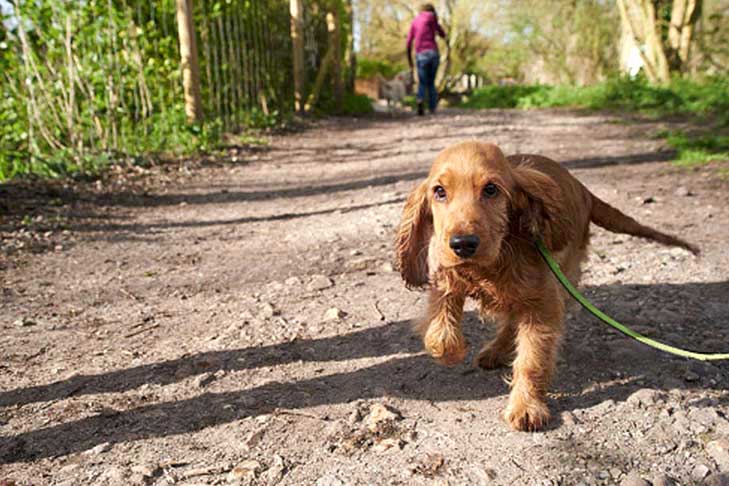
Teach Your Puppy to Love Walks
Your first walks outside should be all about fun. Dont worry about teaching your puppy to heel. Encourage them to explore and sniff.Give your dog the best walk possibleby not rushing bathroom behavior or pulling on the leash. Remember, a leash is for safety, not for control. Your puppy wont learn to love the leash if you use it to pull them around.
At first, your puppy will most likely drag their heels and pull backward rather than pull you forwards. Dont worry about how toteach your puppy how to walk on a loose leashuntil theyre happy to walk and move forward on their own. If you keep things positive and fun, in no time your puppy will feel excited to take walks. Then you can worry about training polite walking behavior.
Tips to Get Your Puppy Walking
If youre still struggling to get your puppy moving on leash, try the following tricks:
- Carry your puppy 20 or 30 feet away from home and let them walk back on their own. Your puppy will experience all the same things they would walking away from home, but knowing they are returning to safety will encourage them to keep moving.
- Drive a block or two from home and walk your puppy back to the house.
- Drive to a new location. A different area, a quiet park, or a pet store that allows dogs inside are all perfect places to socialize your puppy. Plus, not having the house in sight might help your pup explore rather than retreat.
- Have a favorite person or dog stand on the sidewalk away from your home. That will give your puppy something exciting to walk towards.
- As a reward, choose a high value treat or toy that your puppy only gets on walks. Your pup will be tempted to walk to earn this special goodie.
- Enroll in apositive dog training class. Its a great way to socialize your puppy, plus you will get hands-on assistance tailored to your puppys specific needs.
Whatever techniques you need to try, stay upbeat during your walks. Your puppy will sense your emotions, so if you get worried or frustrated, it will impact your pups perception of the experience. Keep your walks short and fun, and always end every walk on a positive note. It might take weeks, but every step you make together will get you closer to your goal. In time, your puppy will be walking with enthusiasm and confidence.
Need help with your adorable new puppy? Training your dog can be challenging without expert help. Thats why were here to help you virtually, through AKC GoodDog! Helpline. This live telephone service connects you with a professional trainer who will offer unlimited, individualized advice on everything from house-training to behavioral issues.

